David Cross – 9 June, 2011
What it does do is investigate in a surprisingly complex yet elegant economy of means how curation and artmaking can be meshed together to offer innovative considerations of the ways in which charisma is imbued in and across art objects.
Wellington
g. bridle
The Inimical: A Selection from The Retreat
(in camera : a project series around and about collecting)
4 June 2011 - 18 December 2011
The New York-based artist John Kelsey recently highlighted his misgivings about the critical reception of a work he made with Bernadette Corporation, a collective with a strong emphasis on textual practice. In describing what he saw as the popular misinterpretation of a recent showing of an epic poem at Greene Naftali gallery, he felt it necessary to declare that,” Form is a weapon. It’s something that cannot be argued with.”1
Kelsey’s inclination to fire a shot across the bow of those critics who prefaced political and conceptual understandings of the work over formal considerations had a curious correlation with a talk by Wellington critic and historian Marcus Moore on the work of g. bridle that has just opened as part of the in camera series at Adam Art Gallery.
Moore’s lucid and considered take on bridle’s recent staging of The Retreat entitled The Inimical: A Selection from The Retreat highlighted a range of contexts that he saw as potential entrance points into an installation of work that featured video, photography and a series of enigmatic objects mounted both on the wall and on a timber mantelpiece/shelf. For Moore, the readymade, or specifically the assisted readymade, provided a useful rubric by which to think about bridle’s assorted objects that form the latest distillation/iteration of his collection of artefacts that together make up The Retreat.
Certainly the process of selection, careful modification, and subsequent re-location of seemingly diverse objects such as a close-up photograph of a rare New Zealand fly, and a ‘real’ cannonball seems at face value to speak to a distinctly Duchampian mode. Yet in all the discussion around collection and display, what was missing from Moore’s considered take was the fundamental importance of formal concerns in bridle’s work and specifically the extraordinary dexterity by which each object in the suite has been produced and displayed. Indeed, it is the luxurious tension between a highly wrought craft redolent in each component, and the uncertain provenance of all of the objects (are they found, fabricated or a mixture of both?) that gives this exhibition its bite.
While The Inimical is prefaced loosely as ‘an amalgam of things’, the artist is clearly messing with the distinction between artist and collector, muddying the waters of what constitutes the production and collection of objects in such a way that the possibility of easy categorisation is carefully deferred. While it is tempting to see the collection as a series of disparate ciphers accumulated for their latent profundity, it also flirts with the reading that this collection with its weird photos of ravens and rock formations is the obsession of a nutter who somewhat perversely has a dysfunctional relationship between objects and their widely acknowledged cultural and economic value.
This is a very difficult line to walk and the value of The Inimical rests in large part on how the artist layers the evidence for both interpretations. It is here that the activation of a heightened formal language within and across each component plays such a crucial role. In the photograph entitled the inimical 2011, an unknown figure poses wearing what appears to be a felt bucket-shaped hat that covers the sitter’s whole head with two small eye holes cut out for vision. The hat is both absurd and strangely sober, part adolescent joke, part carefully made portrait that is elusive because of its considered activation of both modes. Importantly, the ludicrous quality of the image is tempered by the extraordinary care of the framing that suggests great thought has gone into the colour, thickness and scale of the frame to enhance the significance or cachet of the picture. Such formal consideration deftly elevates the profundity of the photograph and makes it especially difficult to dismiss the work as a flippant comic one liner. That the formal care and consideration of the framing seems to be in contradistinction to the subject matter of the photograph imbues the work with a compelling tension that is difficult to resolve.
Crucially, bridle does not activate a one size fits all approach of serious meticulous form framing an eccentric subject matter. In the video projection the critique:Patterns of Self Concern (ocean wave) 2007, a figure, (potentially the artist himself), stands on a rock in the sea waving repeatedly like a slightly unhinged children’s television host or the skeleton on a ghost ship in an Edgar Allan Poe story. As with the inimical photograph, the figure has an absurd hair mask/headcovering that which sets up the slightly grotesque scenario whereby the figure is waving maniacally without having any sense of what or whom they are waving at.
Yet where the finish of the inimical photograph is crisp and refined, the video is both grainy and subject to jerky movement. The camera bobbing in the ocean either on a boat or hand held in the water, makes it frustratingly difficult to get a clear view of the figure and in particular the strange mask and garb he/she is wearing. bridle deliberately roughens the formal conventions of video making - obscuring the clarity of the footage and simulating the effect of drunkenness - to keep us at that important distance from a clear understanding of what we are encountering. This modulating and shifting of aesthetic gears across the assorted objects in the installation is impressive for the way it establishes both a unique integrity to each component while not allowing any one object a greater degree of value or significance.
Curator Laura Preston asks the viewer in the exhibition brochure to consider the criteria for the objects that have been included, how and why these things have been selected, and consciously the texts are both helpful and unhelpful in equal measure. Our attempts to frame particular issues in the work around collection and display are undermined by the realisation that there is not one brochure as such but seven different brochures each of which preface different issues from the idea of the visible objects being little more than place holders for those objects in the collection not on display, to a meditation on the taxonomies we use to explain inter-relationships of object and species. Preston, in the spirit of the work itself, points us towards specificity but then challenges this by offering multiple ways of grappling with the broader meanings.
Most people will not realise that there is a labyrinthine set of pathways across the catalogue essays and will leave the exhibition with only one set or framework of contextual information. bridle no doubt is entirely comfortable with this fluid contextual information for the assorted writings offer only provisional clarity: anything more threatens the precious sense of enigma that unites his cryptic menagerie of artefacts.
There is a huge amount going on here and no doubt too much for people wanting to get a straightforward angle on the overarching meaning of the work. Unlike the exhibition of art from private Wellington collections on show in the other galleries, The Inimical does not chart New Zealand art history in clearly delineated ways, nor is it an accessible introduction to the art of collecting. What it does do is investigate in a surprisingly complex yet elegant economy of means how curation and artmaking can be meshed together to offer innovative considerations of the ways in which charisma is imbued in and across art objects. To this end, it tackles how that old chestnut of form and content (so often seen as a tired binary distinction) might be given fresh legs - enabling aesthetic and conceptual decision making to wrestle it out in ways that are both elegant and roughhouse in roughly equal proportions.
David Cross.
Thanks to Marcus Moore whose polemical thinking around the exhibition contributed significantly to the framing of this interpretation.
1. See Krauss, Chris, ‘The Complete Poem/Bernadette Corporation’, in Where Art Belongs, Semiotext(e) Intervention Series, no. 8, Los Angeles, 2011, p49.
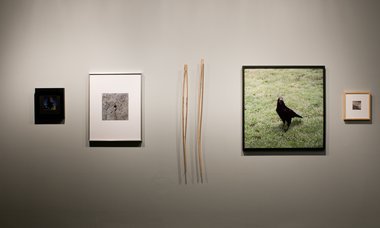
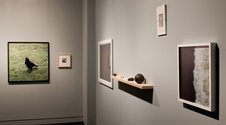
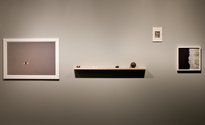
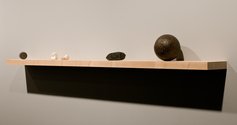
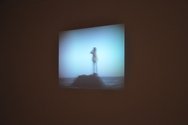
 Two Rooms presents a program of residencies and projects
Two Rooms presents a program of residencies and projects Advertising in this column
Advertising in this column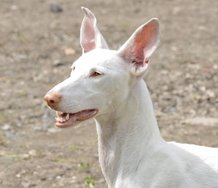



This Discussion has 0 comments.
Comment
Participate
Register to Participate.
Sign in
Sign in to an existing account.